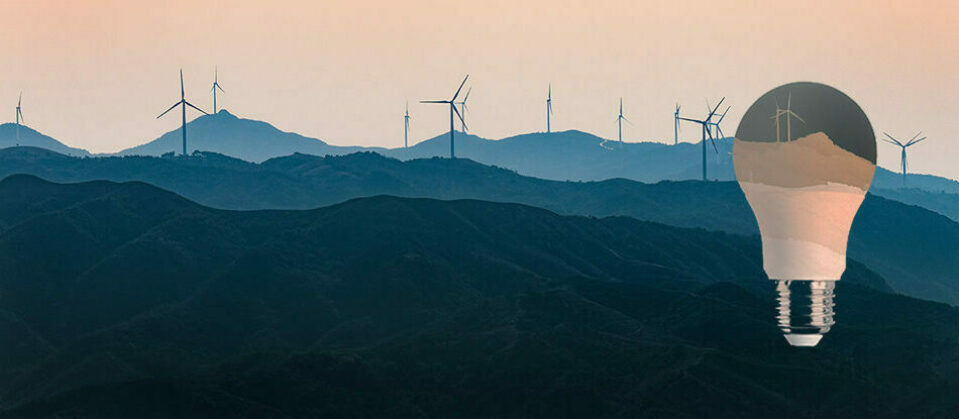Energy & Culture Wars
David J. Hayes (Past Executive Director) / March 5, 2020

The administration is fomenting another culture war. The president has ridiculed the phase-out of incandescent light bulbs, claiming that their replacements give off bad light. Dishwashers’ cleaning cycles are too long. Wind turbines cause cancer and the power shuts off when the wind doesn’t blow. Toilets now require multiple flushes (really?).
The theme throughout is the same: let’s end this foolishness and get back to the good ol’ days when consumers were forced to buy products that needlessly wasted money and resources.
Memories are short. For years, to power companies’ delight, manufacturers pushed out energy-hogging refrigerators, water heaters, clothes dryers, light bulbs, and many other household necessities — triggering more power plant pollution and leaving consumers to pay high utility bills.
Thankfully, those days are behind us, and neither consumers nor our environment want them to return. It began when Congress enacted the Energy Policy and Conservation Act, which called on manufacturers to address their products’ energy demands and inform consumers about expected energy costs. The law has been an enormous success. It launched the auto industry’s corporate average fuel economy program (CAFE), which has tripled our cars’ miles-per-gallon performance, increased our nation’s energy independence and, for automobile model years 2011 through 2025 alone, will save consumers an estimated $1.7 trillion in reduced fuel costs. (Spoiler alert: the Trump administration has proposed to roll back mileage standards, which will increase drivers’ fuel costs by $231 billion.)
The Energy Policy and Conservation Act also established the Appliance and Equipment Standards Program in the Energy Department, which has set achievable and affordable energy efficiency standards for dozens of consumer goods, saving consumers an astounding $1 trillion in energy costs, with another trillion dollars in savings expected by 2030. The corresponding reduction in electricity demand has yielded huge environmental benefits, including avoidance of an estimated 2.6 billion tons in climate change-causing carbon dioxide emissions.
The light bulb story is particularly compelling. Traditional incandescent light bulbs last only a few years, at best, and rely on technology introduced by Thomas Edison in the 1800s. In 2007, Congress took a page from its successful auto industry playbook, and established baseline energy efficiency requirements that all standard light bulbs — regardless of technology — had to meet by 2020. Innovators and manufacturers immediately got to work, collaborating to produce energy efficient and cost-effective compact fluorescent lights (CFLs), and then LED lights — all of which easily clear the performance bar set in 2007.
Today, LED lights are killing the competition with their unbeatable combination of all-in price, longevity and performance. Their light is bright and pure, and LEDs last 25 times longer than traditional incandescent bulbs. CFLs also perform well, and offer a far better value than incandescents.
Congress’ light bulb nudge worked, benefitting both the power grid and consumers. Yet, for literally no good reason, the Trump administration wants to force retailers to keep selling obsolete incandescent light bulbs — undercutting the law, American innovation, and consumer interests. (The administration has offered a lame excuse for ignoring its legal obligations, but the deadlines in the law are clear, and state attorneys general have sued to enforce them.) If the Trump administration gets its way, the biggest losers may be consumers in smaller markets here and abroad who will find obsolete, expensive incandescent left-overs on their shelves, dumped there by manufacturers who cannot sell them anywhere else.
How about the grievance that dishwashers are taking too long to finish the job? Behind that complaint is another success story. Thanks to the Energy Department’s energy efficiency program, dishwashers now use 40% less energy than they used to. They also save nearly 4,000 gallons of water over their lifetimes. And if you think they run for too long, how about pushing the shorter clean cycle button you can find on nearly every new dishwasher?
Dissing wind power fares no better. As Warren Buffett and many others attest, wind power is a domestically produced, clean energy bargain that utilities are snapping up and successfully integrating into their systems, with more on the way. And, guess what? Lights still glow when the wind doesn’t blow and, no, wind power does not cause cancer.
So enough of this culture war nonsense. Let’s celebrate our nation’s energy-saving technological advances. Our nation is more energy secure because of it, and we are saving big bucks in the bargain.
This page was updated on April 20, 2024 to better meet our accessibility standards. To see the page as it was initially published, click here.
